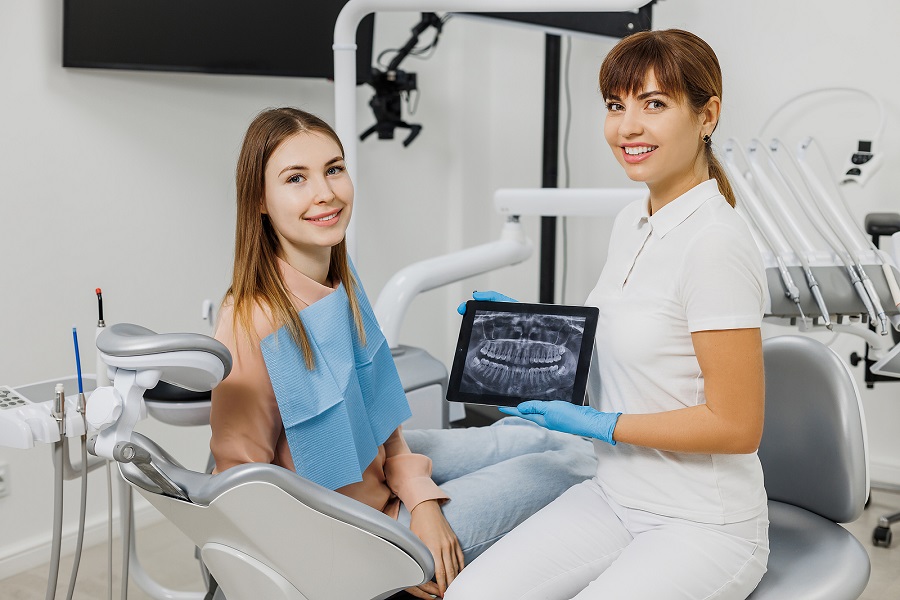“Dental x-rays are a useful diagnostic tool when helping your dentist detect damage and disease not visible during a regular dental exam. How often x-rays should be taken depends on your present oral health, your age, your risk for disease, and any signs and symptoms of oral disease. For example, children may require x-rays more often than adults. Your dentist will review your history, examine your mouth and then decide whether or not you need x-rays.
If you are a new patient, the dentist may recommend x-rays to determine the present status of your oral health and have a baseline to help identify changes that may occur later. A new set of x-rays may be needed to help your dentist detect any new cavities, determine the status of your gum health or evaluate the growth and development of your teeth. If a previous dentist has any radiographs of you, your new dentist may ask you for copies of them. Ask both dentists to help you with forwarding your x-rays.
Dental x-ray exams are safe; however, they do require very low levels of radiation exposure, which makes the risk of potentially harmful effects very small. Dental x-ray tools and techniques are designed to limit the body’s exposure to radiation and every precaution is taken to ensure that radiation exposure is as Low as Reasonable Achievable (the ALARA principle). A leaded apron minimizes exposure to the abdomen and may be used when it will not interfere with acquisition of the dental radiograph. Also, a leaded thyroid collar can protect the thyroid from radiation, and should also be used whenever possible. The use of a leaded thyroid collar is recommended for women of childbearing age, pregnant women and children.
Are you pregnant? Make sure to tell your dentist. During your pregnancy, you may need to have x-rays taken as part of your treatment plan for a dental disease. Use of the leaded apron and thyroid collar will protect you and your fetus from radiation exposure. Dental x-rays do not need to be delayed if you are trying to become pregnant or are breastfeeding.” Prepared by: Mouth Healthy, American Dental Association
Our patients sometimes have questions to the amount of radiation they will receive with dental x-rays; at Gulf Coast Dental we use digital sensors for our x-rays that require 80-90% less radiation than conventional film x-rays. Radiation from x-rays is measured in units called Sievert; a millisievert (mSv) is 1/1000 of a Sievert. The average amount of radiation from all sources in the US 6.2 mSv/yr. The amount of radiation from 1 intraoral x-ray is 0.005mSv, Panorex is 0.01 mSv, dental CBCT is 0.2 mSv, mammogram is 0.4 mSv, Upper GI scan is 6.0 mSv, and medical CT scan is 12.0 mSv. So you can see dental x-rays are relatively small radiation doses.
The structures of the teeth and jaw are not very radio sensitive structures; meaning they are not affected by radiation like other structures of the body, such as your vital organs. The information we receive from digital x-rays at Gulf Coast Dental far outweigh the effects of the radiation received. To put is in a different perceptive, 4 bitewing x-rays is less than one day of normal background radiation or less than a short airplane flight.
More Blog Posts

Working Hours
- MON - THU8:00 am - 4:00 pm
- FRI - SUNClosed







